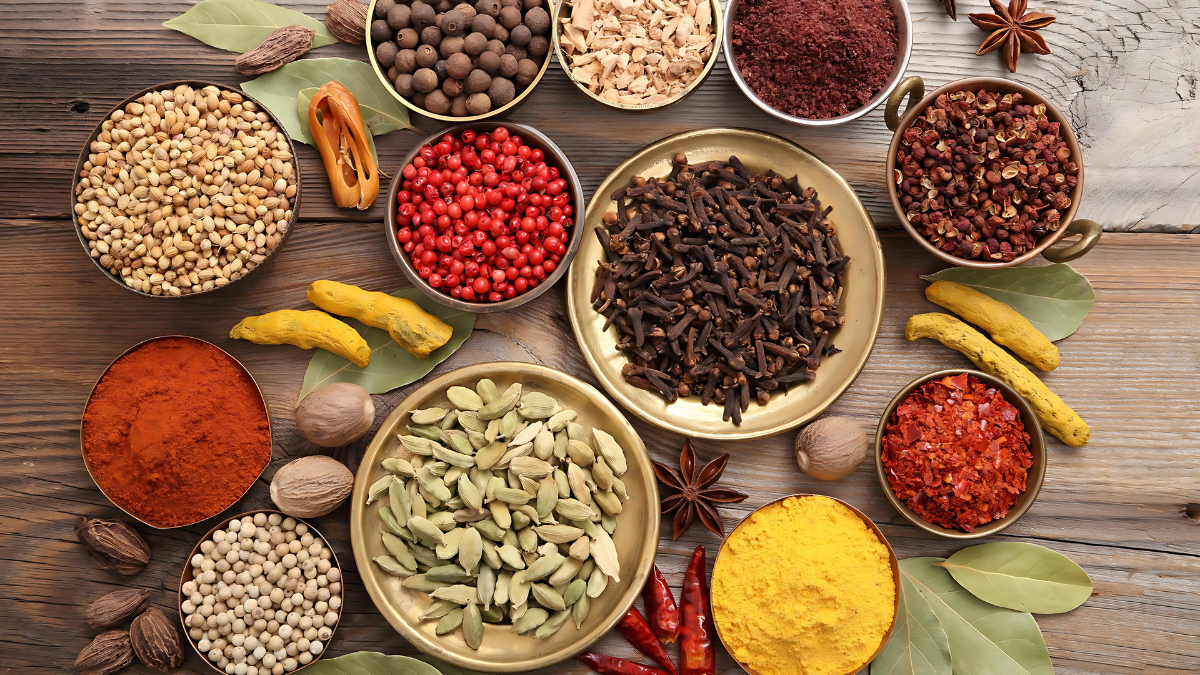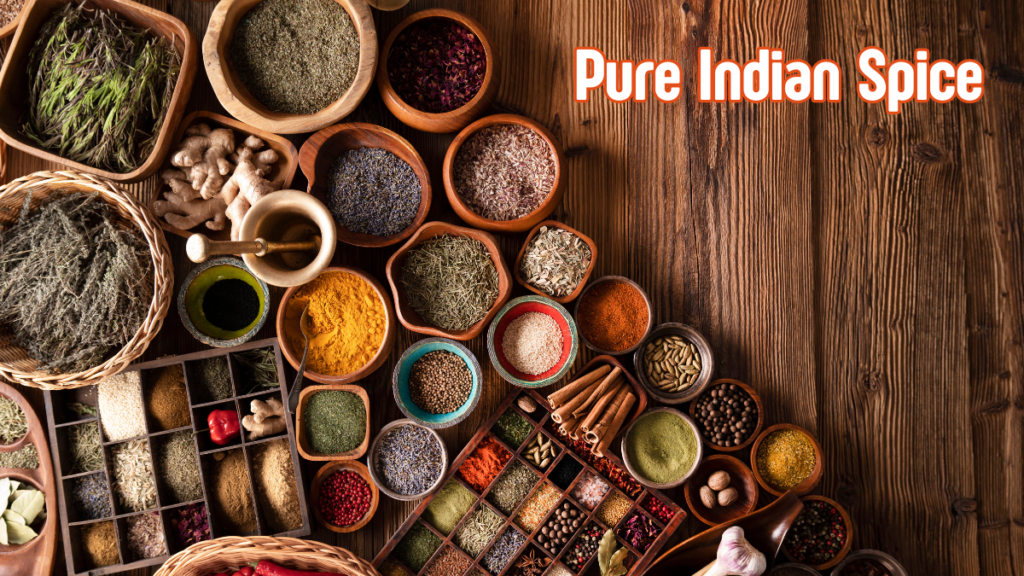India’s culinary traditions are widely recognized worldwide, with a notable emphasis on their use of pure spices. In addition to adding flavor to food, these spices improve overall health and well-being. Here, we go deeply into the realm of pure Indian spices, examining their origins, types, advantages, and potential to revolutionize your culinary endeavors.
The Heritage of Pure Indian Spices
A Historical Perspective
Throughout thousands of years, Indian spices have been a part of history. Research from archaeology and ancient literature indicates that spice trading dates back to 2000 BCE. Spices such as black pepper, cardamom, cinnamon, and turmeric were highly sought-after commodities, and India was dubbed the “Spice Bowl of the World.”
Cultural Significance
In Indian culture, spices play a major role. They are utilized in cosmetics, traditional medicine, religious rites, and cookery, among other things. India’s diverse cultural and geographical backgrounds are reflected in the regional cuisines and distinctive spice mixes found in each area.
Varieties of Pure Indian Spices
Commonly Used Spices
- Turmeric (Haldi): Turmeric is an essential ingredient in Indian cuisine and Ayurvedic medicine, valued for both its therapeutic qualities and vivid yellow hue.
- Cumin (Jeera): Frequently utilized in spice blends and tempering, these tiny seeds give food a hearty, earthy taste.
- Coriander (Dhaniya): Cilantro, both the leaves and the seeds, are used in cooking and add a zesty flavor to a variety of recipes.
- Cardamom (Elaichi): Cardamom, which comes in green and black types, lends a pleasant, flowery touch to both savory and sweet foods.
- Cloves (Laung): These fragrant flower buds add a strong, peppery flavor to both meat and veggie recipes.
Regional Spices
- Kashmiri Chili: These chillies are widely used in North Indian cooking; they have a milder intensity but a beautiful color.
- Kokum: Kokum, which is mainly utilized in coastal areas, gives food a sour taste that is especially noticeable in Goan and Konkani cuisine.
- Asafoetida (Hing): This spicy spice is commonly used in vegetarian cooking, particularly in South Indian food.
- Fennel (Saunf): These are ubiquitous seeds used in Gujarati and Rajasthani cuisine, with a hint of licorice flavor.
Health Benefits of Indian Spices

Turmeric
Turmeric includes a compound called curcumin, which has powerful antioxidant and anti-inflammatory effects. It has been shown to enhance mental performance, reduce the risk of heart disease, and lessen arthritis symptoms.
Cumin
It has been shown that cumin lowers blood cholesterol, helps with digestion, and is high in iron. Additionally, it has antimicrobial qualities that can aid in the battle against infections.
Cardamom
It is well known that cardamom helps with digestion, eases stomach problems, and promotes dental health. Moreover, it contains diuretic qualities that aid in detoxifying.
Coriander
It is well known that coriander seeds prevent infections, reduce blood sugar, and strengthen the heart. The leaves are high in protein, vitamin K, and C.
Using Pure Indian Spices in Cooking
Spice Blends and Masalas
In Indian cookery, masalas, or spice mixtures, are frequently used. These blends of several spices are blended and roasted to produce a multifaceted flavor.
Some popular masalas include:
- Garam Masala: Warm and fragrant mixture that works well in many recipes.
- Chaat Masala: Useful in salads and snacks, this combination has a hint of spice.
- Sambar Powder: Sambar is a lentil-based stew made with a blend of South Indian ingredients.
Cooking Techniques
- Tempering (Tadka): This is releasing the flavors of entire spices by frying them in oil or ghee and then adding them to the dish.
- Marination: In order to flavor and tenderize meats and vegetables before cooking, spices are frequently used in marinades.
- Slow Cooking: To give layers of flavor to stews and curries, spices are added at different stages of cooking.
Pairing Spices with Ingredients
Knowing which spices go well with what can improve the quality of your food. As an illustration:
- Cumin and coriander pair well with lentils and legumes.
- Cardamom and saffron enhance the flavors of desserts and sweet dishes.
- Mustard seeds and curry leaves are essential in South Indian fish curries.
Sourcing and Storing Pure Indian Spices
Sourcing Authentic Spices
Purchasing real, unadulterated spices is essential for maximum flavor and health benefits. Seek out trustworthy vendors who provide premium, pure spices devoid of chemicals and preservatives.
Storing Spices
The key to preserving the efficacy of spices is proper storage. Store them in sealed receptacles, out of the direct sun and moisture. Ground spices can be ground fresh whenever needed, although whole spices often have a longer shelf life.
Conclusion
Pure Indian spices are an essential component of international cuisine due to their rich history and wide range of applications. Foodies all over the world are still enthralled with their distinct flavors and health advantages. We may fully appreciate and utilize these miraculous ingredients in our cuisine by being aware of their origins, variations, and uses.
Also Read:- Exploring Longi Mirch The Fiery Spice with a Rich Heritage


